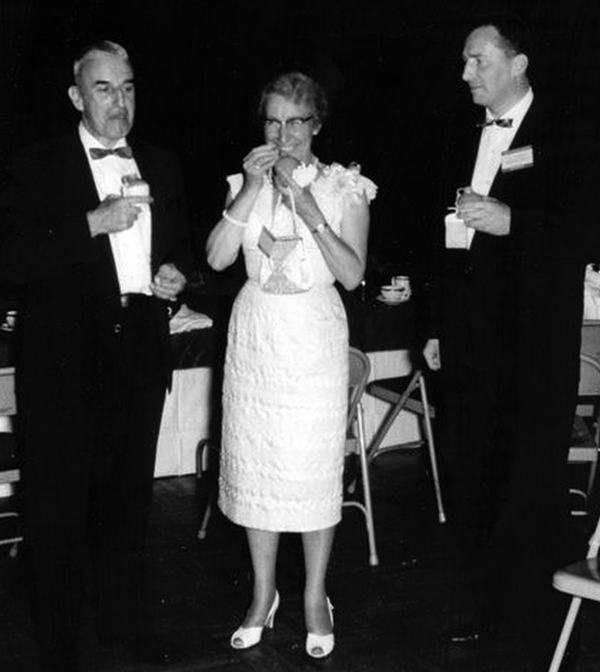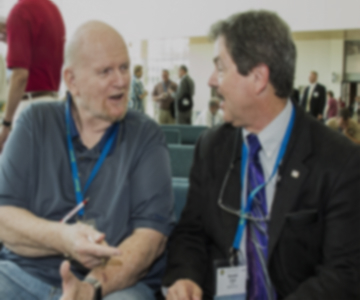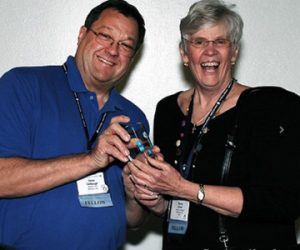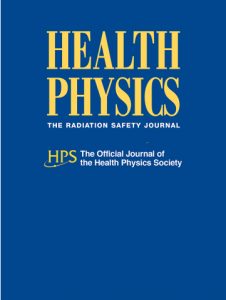1899 — 1961
by Professor Emeritus Paul Ziemer, PhD, CHP


Dr. Elda E. "Andy" Anderson was the first female president of the Health Physics Society (HPS) (1959–1960). Her contributions to the profession of health physics were notable, and she was truly a pioneer in the field.
A graduate of Ripon College (bachelor of arts, 1922), Elda earned an MS in physics from the University of Wisconsin in 1924. From 1924 to 1927, she taught at Estherville Junior College in Iowa, where she was the dean of physics, chemistry, and mathematics. In 1929, Elda became professor of physics at Milwaukee-Downer College and head of the physics department in 1934.
Elda completed her PhD in 1941 at the University of Wisconsin, writing her thesis "Low Energy Levels in the Atomic Spectra Co VII and Ni VIII." Immediately after finishing her PhD, Elda left her position at Milwaukee-Downer College to conduct research related to the Manhattan Project at the Office of Scientific Research and Development at Princeton University. She was then recruited to continue her work at Los Alamos National Laboratory. At her new location, Elda studied basic fission parameters such as the time delays associated with the absorption and emission of neutrons. Among other accomplishments at Los Alamos, Elda prepared the first sample of pure uranium-235 at the laboratory. We are told that, while there, she lived in a dormitory and, being older than most of the other residents (she was in her mid 40s), she was put in charge of the dorm group. She often worked at night, wearing jeans and a plaid shirt—not the usual attire for a woman at the time.
Following the war, in 1947, Elda left Los Alamos and returned to teaching at Milwaukee-Downer College. However, her studies in atomic physics led to an interest in the health effects of radiation. As a result, she left teaching in 1949 and began a career in the Health Physics Division of the Oak Ridge National Laboratory in Tennessee. At Oak Ridge she became the first chief of health physics education and training. In March 1950, the US Atomic Energy Commission had announced a special training program in what was then called radiological physics. The program was open to college graduates with science or engineering degrees who were selected for a year's fellowship at a major university that included a summer internship at a national laboratory. The Oak Ridge National Laboratory was one of the training sites, with fellowship students assigned there after completing the academic portion at Vanderbilt University.
From 1950 until her death in 1961, Elda lectured in the health physics courses at Vanderbilt, and she managed and mentored the fellows during their summer internships at Oak Ridge. Typically, there were about 30 trainees in the Vanderbilt/Oak Ridge program each year, so several hundred health physicists were directly mentored by Elda during that period. Beyond the normal teaching and training duties, Elda was also known for lending helpful guidance to students with problems both academic and personal. In some cases, she was known to have given loans to students, as well as sharing a drink in troubling times.
In addition to the students in the fellowship program, she was responsible for providing health physics training to military personnel, state and federal officers, and university professors. Elda organized the first international course in health physics in Stockholm, Sweden, in 1955; she organized similar courses in Belgium in 1957 and Mumbai, India, in 1958.
While Elda was a physicist by training, she is best known for being a mentor and teacher. Those who knew her describe her as warm and genuine. A member of the HPS who studied under Elda described her as follows: "She was dedicated to providing a solid educational base for health physicists, was tireless in identifying suitable employment opportunities for her students, and was an encouraging role model who stressed the importance of active involvement in the Health Physics Society. She was a no-nonsense, down-to-earth sort of person who could enjoy a good laugh, but also pursue a serious goal. It was through her help that my career path took me to a significant and productive career in health physics."
Elda played a key role in the establishment of the HPS in 1955, serving as secretary pro tem and then charter secretary and eventually as president of the Society from 1959 to 1960.
In the year of Elda's presidency, the HPS included 18 countries in addition to the United States. That year the Society hired its first executive secretary, increased membership by 10% to over 1,400 members, adopted the classic Society symbol, established the American Board of Health Physics (ABHP), and approved the first local chapters. It was a busy time in the HPS!
In 1956, Elda, who never married and had no children, developed leukemia. She died in Oak Ridge, Tennessee, on 17 April 1961 of breast cancer and leukemia. Elda was buried at Green Lake Cemetery in Green Lake, Wisconsin.
Elda's memory is honored each year at the annual meeting of the HPS when the Elda E. Anderson Award is presented to a young and promising member of the Society to recognize excellence in research or development, discovery or invention, devotion to health physics, and significant contributions to the profession of health physics.
The following resources also provide relevant information about Dr. Elda Anderson:
- Britannica: "Elda Emma Anderson"
- Princeton University: "Elda Anderson"
- Los Alamos History: "Pioneering Women in Los Alamos"
- Atomic Heritage Foundation: "Elda Anderson"
- NuclearNewswire: "Let's Meet Physicist Dr. Elda Emma Anderson"
- Physics Today: "Elda E. Anderson" (obituary)
- The Lawrentian: "Elda Emma Anderson: The Unsung Hero"






